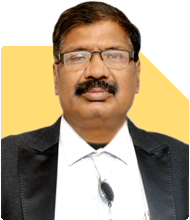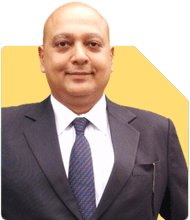Nikunj Saraf |308 Answers |Ask -Follow
Mutual Funds Expert - Answered on Sep 26, 2022

Sir, I am 48 years, investing 60,000/ per month since 2016 and have MF Investment in name of my wife, sister and myself, my main fund are below given with SIP amount. besides I have kept 10L in Debt Funds (SBI ST, ICICI ST, Axis ST, Kotak ST (Short Term) for emergency or Top Up on market falls. In coming year I want stop SIP of Small Cap, Mid Cap and like to Add Balance Advantage fund for 25000 PM, Which fund you suggest.
Do you advise to stop either of below fund or revise SIP amount. My Target is to retire at age 55Yrs and travel India and live in nature/hill area.
ELSS (Invested VALUE 1.45/LATEST VAL:1.60)
1) AXIS LONG TERM - 5000
2) KOTAK TAX SAVER -5000
FLEXI CAP (INV-V: 5.70/ LAT VAL 7.20L)
3) KOT FLEXY - LATEST VAL: 3.52L, SIP STOPPED)
4) PARAG PAREKH FLEXY C: 10000 SIP
LARGE CAP (INV. VALUE 6.10L - LATEST VALUE 8.25L)
5) ICICI BLUCHIP - 5000
6) SBI BLUCHIP - 10000
LARGE & MID CAP (INV VALUE 6.40L/LATEST VALUE 8.70L)
7) MIRAE EMERGING - 5000
8) KOT OPPORTINITY - 10000
9) AXIS GROWTH OPPORTUNITY – 5000
MID CAP (INV VALUE 2.20L/LATEST VALUE 2.70L)
10) AXIS MIDCAP - 5000
SMALL CAP (INV VALUE 4.95 L - LATEST VALUE 8.30 L)
11) NIPPON SMALL CAP - 10000
12) SBI SMALL CAP - 5000
13) ICICI VALEU DISCOVERY - 5000 SIP
14) SBI TECH - 5000 SIP
15) NIPPONBALANCE FUND: 15000 SIP (INV 5.0L- LAT VALUE 5.20L)
Hence, I will suggest you to stop the sips with high risk schemes other than large cap fund.
You may like to see similar questions and answers below
Omkeshwar Singh | Answer |Ask -Follow
Head, Rank MF - Answered on Aug 08, 2022
Omkeshwar Singh | Answer |Ask -Follow
Head, Rank MF - Answered on Aug 08, 2022
Omkeshwar Singh | Answer |Ask -Follow
Head, Rank MF - Answered on Aug 08, 2022
Ramalingam Kalirajan |8083 Answers |Ask -Follow
Mutual Funds, Financial Planning Expert - Answered on Aug 20, 2024
Rajesh Kumar Singh |150 Answers |Ask -Follow
IIT-JEE, GATE Expert - Answered on Mar 06, 2025
Rajesh Kumar Singh |150 Answers |Ask -Follow
IIT-JEE, GATE Expert - Answered on Mar 06, 2025
Rajesh Kumar Singh |150 Answers |Ask -Follow
IIT-JEE, GATE Expert - Answered on Mar 06, 2025
Rajesh Kumar Singh |150 Answers |Ask -Follow
IIT-JEE, GATE Expert - Answered on Mar 06, 2025
Sushil Sukhwani |588 Answers |Ask -Follow
Study Abroad Expert - Answered on Mar 06, 2025
Radheshyam Zanwar |1340 Answers |Ask -Follow
MHT-CET, IIT-JEE, NEET-UG Expert - Answered on Mar 06, 2025
Mayank Chandel |2086 Answers |Ask -Follow
IIT-JEE, NEET-UG, SAT, CLAT, CA, CS Exam Expert - Answered on Mar 06, 2025
Rajesh Kumar Singh |150 Answers |Ask -Follow
IIT-JEE, GATE Expert - Answered on Mar 06, 2025

Radheshyam Zanwar |1340 Answers |Ask -Follow
MHT-CET, IIT-JEE, NEET-UG Expert - Answered on Mar 06, 2025
Rajesh Kumar Singh |150 Answers |Ask -Follow
IIT-JEE, GATE Expert - Answered on Mar 06, 2025























